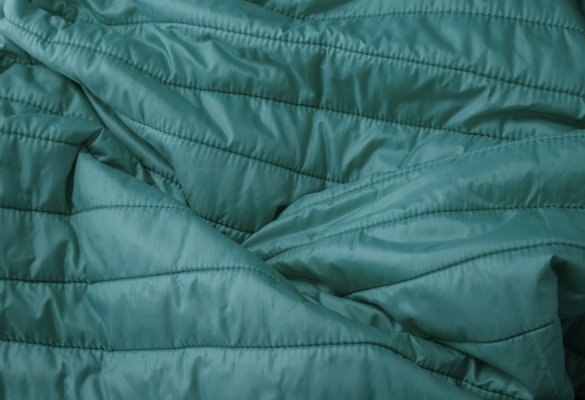There are several aspects to consider when choosing the best sleeping bag for your needs. You have to decide on the size, shape, temperature rating, weight, usage indications and more. While they are all important, there is one other aspect which is paramount: the type of insulation in your sleeping bag.
The reason why insulation is so important is that it is responsible for how warm you are going to feel inside the bag, so you must choose a sleeping bag with a high-quality insulation. The type of fill also plays an important role in how heavy, water resistant and durable your sleeping bag is.
There are two main types of insulation you’re going to find in most sleeping bags: synthetic and down. They both perform the same functions and they both come with their own pros and cons.
Here they are:
Synthetic insulation. It comes in a variety of proprietary fills, depending on the brand and model of the bag, but it is usually made of polyester. One of the most important advantages of synthetic insulation is that it can keep you warmer in damp conditions. It is water resistant and even if your sleeping bag is soaked, you will still feel warm inside it. Another benefit is the fact that sleeping bags with synthetic insulation are hypoallergenic, which is good news for people who have allergies, because not everybody can cope with goose feathers. And yet another pro is the fact that synthetic sleeping bags are more affordable than those with down insulation.
On the downside, synthetic sleeping bags don’t compress as much as bags with down fill, which means they’ll feel bulkier and heavier and they’ll take up more space in your camping kit. And although high-end sleeping bags will be warm enough, down insulation usually keeps you warmer.
Down insulation
Down insulation is made of the soft plumage under the feathers of gees or ducks. It is all natural and it is measured by the ‘fill power’: 500, 700, 800 and so on, depending on the down quality.
One of the biggest advantages of down insulation is that it keeps you very warm while being incredibly light. It is also more durable than synthetic insulation, with a lifespan of 10 years or even more, depending on the quality.
Down sleeping bags are also highly compressible, which makes them fit easily in your backpack. They are also lightweight.
As for the main disadvantages, the first one is the price. Sleeping bags with down insulation are more expensive than those that use synthetic materials.
Another downside is the fact that down doesn’t cope with water and dampness as well as synthetic insulation. When exposed to water, down significantly loses from its insulating properties and it will also take a long time to dry. And, as we’ve already mentioned it, down insulation is not suited for people with allergies.
There are also manufacturers out there that make mixed sleeping bags, which combine synthetic and down insulation. Those sleeping bags have a steeper price tag than synthetic bags, but they cost less than down insulated bags. They can cope better with water than down sleeping bags, but worse than completely synthetic ones and they can compress better than synthetic sleeping bags, but are still bulkier than down bags.





